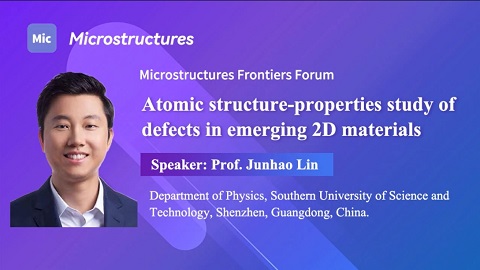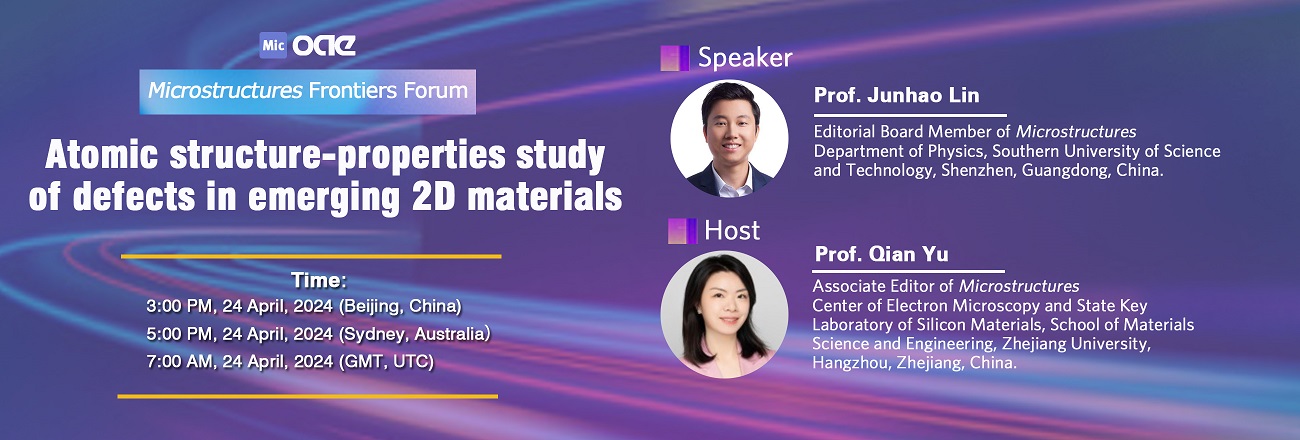Contents
Host

Prof. Qian Yu
Associate Editor of Microstructures
Center of Electron Microscopy and State Key Laboratory of Silicon Materials, School of Materials Science and Engineering, Zhejiang University, Hangzhou, Zhejiang, China.
Speaker
Prof. Junhao Lin
Editorial Board Member of Microstructures
Department of Physics, Southern University of Science and Technology, Shenzhen, Guangdong, China.
Email: linjh@sustech.edu.cn
Dr. Junhao Lin obtained his PhD degree of Physics from Vanderbilt University, USA, in 2015. He was trained in both theoretical density functional theory (DFT) and experimental scanning transmission electron microscopy (STEM), in which he combines these two techniques synergistically to investigate the structure-property correlations in two-dimensional (2D) materials. He had his postdoctoral work as a JSPS fellow in AIST, Tsukuba, Japan from 2015-2018, hosted by Dr. Kazu Suenaga, and continue the research mostly in 2D materials with low-voltage monochromatic S/TEM. He is now an associate professor in the Department of Physics, Southern University of Science and Technology (SuSTech). His main research direction includes analysis of complex defect structures in novel 2D materials, real time in-situ observation of the dynamical processes in structural transition of materials under various environmental stimulations, and the development of stable 2D ferromagnetic and ferroelectric materials. He has published more than 130 journal papers, including first/corresponding authored paper in Nature, Science Nature Nanotechnology, Nature Materials, PRL and etc, with a total citation of more than 14000 times, H-index 50 (GoS data).
Abstract
Two-dimensional (2D) materials are considered to be the candidates for future nano-electronic, optoelectronic and spintronics applications. It is well known that defects are determinant to the properties of materials, thus understanding defects in 2D materials serves as the key step for functionality engineering and improved performance in devices.
In this talk, I will first show the atomic scale structure-properties correlation studies of various defect structures in emerging 2D materials, by quantitative intensity analysis in a low-voltage scanning transmission electron microscope (STEM). Secondly, I will introduce the universal strategy to overcome the structural degradation problem of air-sensitive 2D materials. We develop a home-built interconnected inert gas protection system compatible with atomic STEM imaging, and I will show the recent breakthroughs in structure-properties correlation of various air-sensitive 2D materials. Examples including but not limit to: monolayer amorphous carbon where the high-density distorted defect network contribute to its ultrahigh mechanical toughness; intrinsic defect structures in air-sensitive WTe2/MoTe2 monolayer and their heterostructures with resonating phonon vibrations; superlattice reconstruction in dative epitaxial heterostructure and self-intercalated 2D magnetic heterojunction with exotic magnetic responses, etc.
Moments
Presentation







